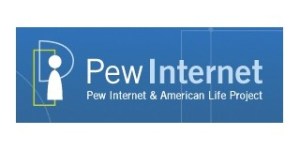from Cengage Learning Blog

It’s a big day: you’re having your first meeting with a very important and influential person. You’ve given yourself a “pep talk” to calm your nerves, you’ve practiced what you want to say several times, and you’ve eaten approximately twelve breath mints. Filled with both confidence and nervous energy, you head out the door.
Having given yourself ample time to travel to your meeting spot, you arrive ten minutes early. Still a bit antsy, you go into the restroom and check your teeth, your hair, and your makeup (if you wear it). Everything looks fine. But then, you look down… and notice a large coffee stain on your shirt. Where did that come from? Now, with no time to spare, you must go to your meeting in stained clothes. Regardless of whether or not your new contact notices the stain, you feel more self conscious and recognize that this area of neglect may impact that person’s opinion of your attention to detail.
Full post here.
Each one of us knows how embarrassed or upset we feel when we inadvertently overlook something that spoils an otherwise laudable presentation. We tell ourselves: “Next time, I’ll do one final review before I consider myself ready to go.”
This same principle can apply to students and the paper-writing process. Though they may be tempted to submit their papers the moment they’ve wrapped up their final paragraphs, they will benefit by taking the time to re-read their work and check for any errors that they (or spell-check) missed during the writing and revision process. In this respect, proofreading is much like a final “glance in the mirror” that helps students leave their readers with the best possible impression of their writing skills.
Before your next writing assignment is due, we suggest that you provide your students with these useful proofreading tips from Ann Raimes and Susan K. Miller-Cochran’s Keys for Writers, Seventh Edition:
- Do not try to proofread on the computer screen. Print out a hard copy.
- Make another copy of your manuscript, and read it aloud while a friend examines the original as you read.
- Put a bank piece of paper under the first line of your text. Move it down line by line as you read, focusing your attention on one line at a time.
- Read the last sentence first, and work backward through your text. This strategy will not help you check for meaning, logic, pronoun reference, fragments, or consistency of verb tenses, but it will focus your attention on the spelling, punctuation, and grammatical correctness of each individual sentence.
- If possible, put your manuscript away for a few hours or longer after you have finished it. Proofread it when the content is not so familiar. (47)
Reference: Raimes, Ann and Miller-Cochran, Susan K. 2014. Keys for Writers, 7th ed. Boston, MA: Wadsworth, Cengage Learning.
Source



